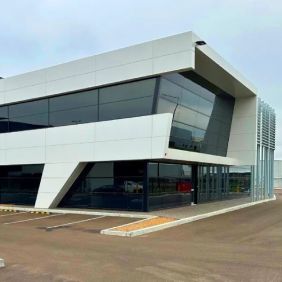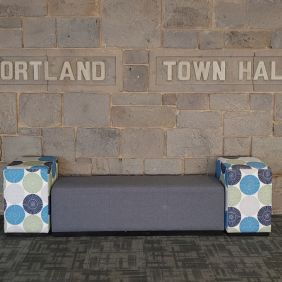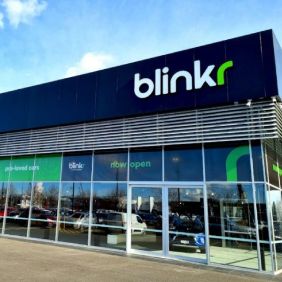A noticeboard is a board where people can post notices, while a whiteboard is a board where people can write or draw. However, if you are like most people, you may not really tell them apart. As a matter of fact, there are so many people who assume they are one and the same thing.
If you are suffering from this form of confusion, you are in the right place. In this article, we will look at both the whiteboard and the noticeboard. We will highlight their features, pros, and cons. At the end of the day, you will be in a better place to choose if you need a noticeboard or a whiteboard.
Without further ado, let’s dive in.
What Is a Whiteboard?
A whiteboard is a blank surface that you can use to jot down notes or draw diagrams. The name whiteboard is derived from the fact that most of them are white in colour. Whiteboards usually come in a rectangular shape.
They come with a frame and they have a glossy surface. This glossy surface makes it possible for you to erase anything that you have written or drawn on the board.
You can use whiteboards in different settings. For instance, you can use them in a conference room to help relay information to other people.
Other than that, you can also use them in a classroom setting. Teachers often use whiteboards to help their students understand different concepts.
What Is a Noticeboard?
A noticeboard is basically a board where people can post notices. These boards are usually found in public places such as schools and hospitals.
They come in different shapes and sizes. Some of them may be small while others may be large enough to cover an entire wall.
Noticeboards usually have a pinboard surface. This type of surface makes it possible for you to pin different notices on the board.
The good thing about noticeboards is that they are quite versatile. For instance, you can use them to post announcements, reminders, and even notices of upcoming events.
Differences between a Whiteboard and a Noticeboard
Now that we have looked at both the whiteboard and the noticeboard, it is time to compare them. Here are some of the key differences between these two types of boards.
- Surface
One of the main differences between a whiteboard and a noticeboard is their surface. As we have seen, a whiteboard has a glossy surface. On the other hand, a noticeboard has a pinboard surface.
- Usage
Another key difference between these two boards is their usage. As we have seen, whiteboards are mainly used in classrooms and conference rooms. On the other hand, noticeboards can be used for a variety of purposes such as posting announcements and reminders.
- Colour
Another difference between these two boards is their colour. In most cases, whiteboards are white in colour. On the other hand, noticeboards come in different colours.
- Size
Whiteboards and noticeboards also differ in terms of size. Whiteboards usually come in a rectangular shape. Noticeboards, on the other hand, come in different shapes and sizes.
- Cost
Another key difference between these two boards is their cost. Whiteboards are usually more expensive than noticeboards. This is attributable to the fact that they are made of different materials.
Benefits of Using a Whiteboard
There are several benefits that come with using a whiteboard. Some of these benefits include:
- Helps to Convey Information
One of the main benefits of using a whiteboard is that it helps to convey information. This is because you can use them to write down notes or draw diagrams. This makes it easier for people to understand the information that you are trying to relay.
- Enhances Creativity
Another benefit of using a whiteboard is that it enhances creativity. This is because you can use them to brainstorm ideas with other people. Brainstorming on a whiteboard usually leads to the generation of new and innovative ideas.
- Facilitates Learning
Another benefit of using a whiteboard is that it facilitates learning. This is because you can use them to write down key points or summarize a lesson. This makes it easier for students to understand and remember the information.
- Encourages Participation
Another benefit of using a whiteboard is that it encourages participation. This is because people are usually more engaged when information is being conveyed using a whiteboard.
- Improves Communication
Another benefit of using a whiteboard is that it improves communication. This is because it helps to ensure that everyone is on the same page. This is attributable to the fact that you can use them to write down or draw diagrams that can be easily understood by everyone.
Benefits of Using a Noticeboard
There are several benefits that come with using a noticeboard. Some of these benefits include:
- Helps to Keep Things Organized
One of the main benefits of using a noticeboard is that it helps to keep things organized. This is because you can use them to pin different notices. This helps to ensure that you do not forget any important information.
- Versatile
Another benefit of using a noticeboard is that they are quite versatile. For instance, you can use them to post announcements, reminders, and even notices of upcoming events.
- Attractive
Another benefit of using a noticeboard is that they are usually quite attractive. This is because they come in different colours and sizes. This makes them ideal for use in both home and office settings.
- Affordable
Another benefit of using a noticeboard is that they are quite affordable. This is because they are made of cheaper materials as compared to whiteboards.
Conclusion
From the above discussion, it is clear that there are several differences between whiteboards and noticeboards. Some of these differences include their usage, colour, size, and cost. However, both of these boards have their own set of benefits. It is up to you to decide which board best suits your needs.









